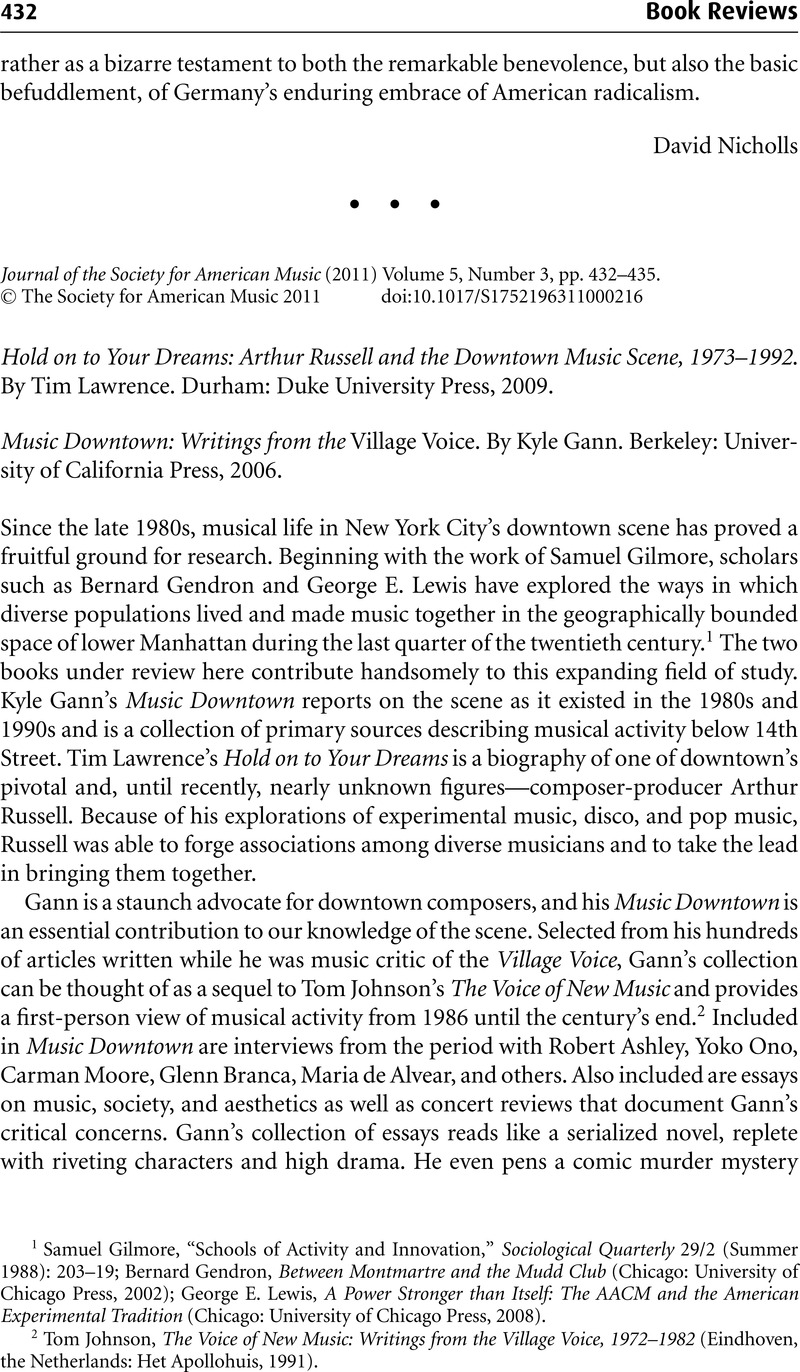No CrossRef data available.
Published online by Cambridge University Press: 13 July 2011

1 Gilmore, Samuel, “Schools of Activity and Innovation,” Sociological Quarterly 29/2 (Summer 1988): 203–19CrossRefGoogle Scholar; Gendron, Bernard, Between Montmartre and the Mudd Club (Chicago: University of Chicago Press, 2002)Google Scholar; Lewis, George E., A Power Stronger than Itself: The AACM and the American Experimental Tradition (Chicago: University of Chicago Press, 2008)CrossRefGoogle Scholar.
2 Johnson, Tom, The Voice of New Music: Writings from the Village Voice, 1972–1982 (Eindhoven, the Netherlands: Het Apollohuis, 1991)Google Scholar.
3 See, for instance, Oja, Carol J., Making Music Modern: New York in the 1920s (New York: Oxford University Press, 2000)CrossRefGoogle Scholar; Stansell, Christine, American Moderns: Bohemian New York and the Creation of a New Century (New York: Owl Books, 2000)Google Scholar; and Beard, Rick and Berlowitz, Leslie Cohen, Greenwich Village: Culture and Counterculture (New Brunswick, N.J.: Rutgers University Press, 1997)Google Scholar.
4 Varèse was active in the downtown scene while he resided in the United States. He lived and worked in Greenwich Village and was active in the Eighth Street Artists Club.
5 Cohen, Brigid, Modernism Untethered: Wolpe, Music, and the Avant-Garde Diaspora (Cambridge: Cambridge University Press, forthcoming)Google Scholar.
6 Lawrence, Tim, Love Saves the Day: A History of American Dance Music Culture, 1970–1979 (Durham: Duke University Press, 2003)Google Scholar.
7 Lawrence expands on the theoretical underpinnings of his work in “Connecting with the Cosmic: Arthur Russell, Rhizomatic Musicianship, and the Downtown Music Scene, 1973–1992,” Liminalities 3/3 (November 2007): 1–84.